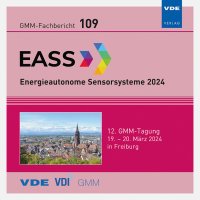Indoor Light Harvesting with Organic Photovoltaics
Conference: EASS – Energieautonome Sensorsysteme 2024 - 12. GMM-Tagung
03/19/2024 - 03/20/2024 at Freiburg, Germany
Proceedings: GMM-Fb. 109: EASS 2024
Pages: 3Language: englishTyp: PDF
Authors:
Mueller, David; Jiang, Ershuai; List, Mathias; Zimmermann, Birger; Wuerfel, Uli
Abstract:
Photovoltaics (PV) have drawn much attention for powering the expanding market of Internet-of-Things (IoT) devices, including sensors, actuators, and wearables. By utilizing solar cells and rechargeable batteries, it is possible to eliminate the cost and environmental impact of replacing disposable batteries. Notably, IoT devices are frequently used indoors under artificial light, which, unlike outdoor sunlight, has a narrower spectrum, limited to the visible range with an intensity being typically 500-1,000 times lower. Consequently, the optimal band gap of the absorber shifts to about 1.9 eV (~ 650 nm) where theoretical efficiencies of about 50 % are achievable. Organic photovoltaics (OPV) can meet these requirements, while being lightweight, flexible and processible with energy and cost-efficient techniques such as roll-to-roll (R2R). Secondly, due to the lower irradiance indoors also the power output is only in the muW/cm(exp )2 range, though with efficient and intelligent area usage of the device housing a considerable amount of energy can be harvested. Under 500 lux LED light, between 20 % and 30 % efficiency have been already shown on lab-scale, while on a full 8 cm2 module with a serial connection of eight cells more than 17 % (~200 muW) have been achieved. Such devices are operable even at illumination levels as low as 50 lx. Long-term aging studies under continuous LED illumination or elevated temperature showed almost no degradation under light for more than 15,000 h (1.7 years) at 50,000 lux, and for more than 2,500 h under 85deg C more than 80 % of the initial performance have been maintained. Under typical indoor conditions which are rather mild (100-1,000 lux, 20-40 °C) the lifetimes may already be in a practical range of several years, assuming that there are no slow real-time degradation effects occurring independent of acceleration by light intensity and temperature.


